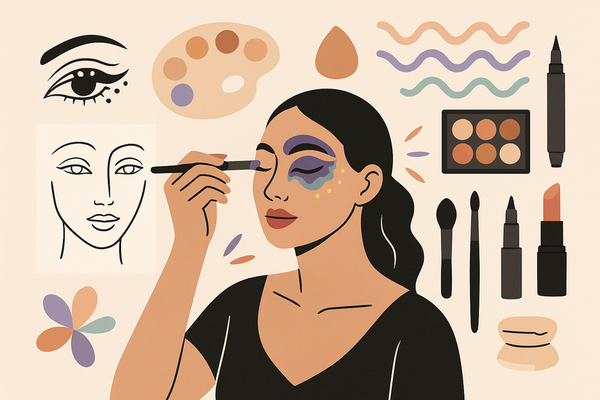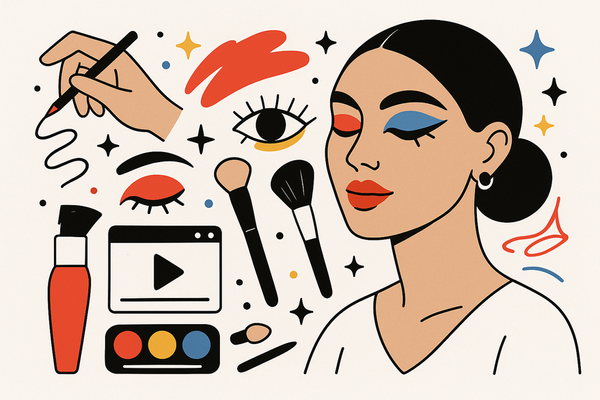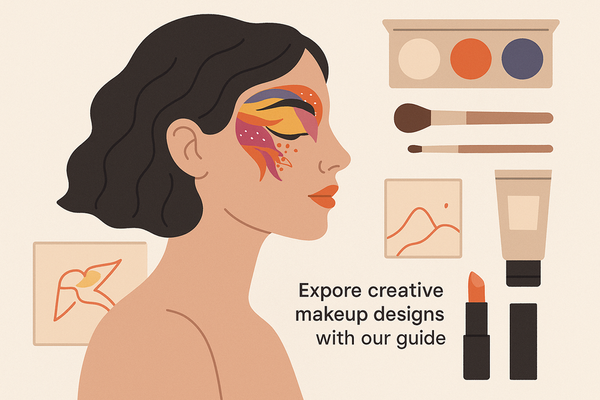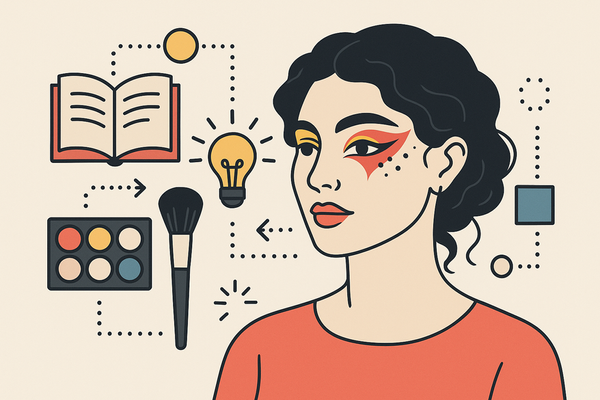Creative Makeup Designs: A Complete Guide to Artistic Cosmetic Expression
Explore creative makeup designs—a blend of color and texture for artistic expression. Discover techniques and trends to elevate your beauty skills.
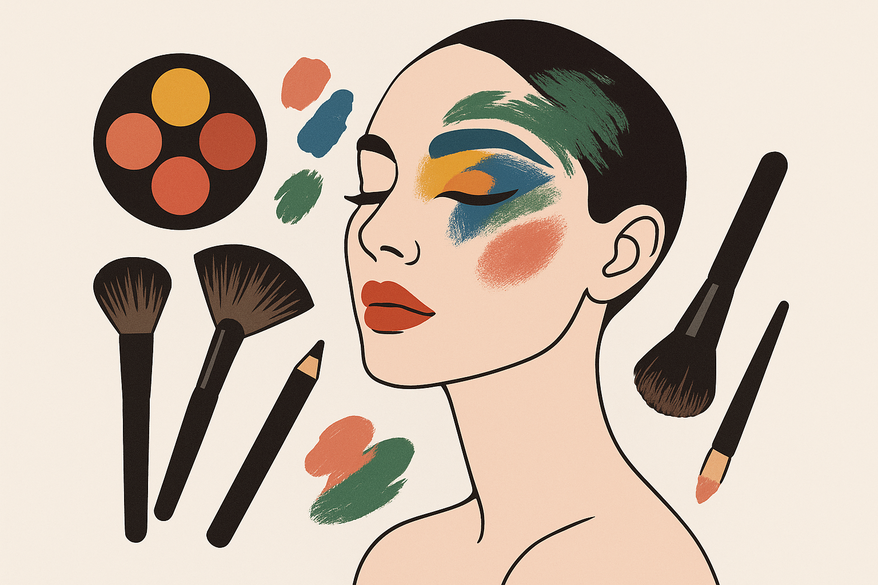
Estimated reading time: 8 minutes
Key Takeaways
- Invest in quality tools: Skin-safe, high-pigment products and precision brushes are essential.
- Master core techniques: Color blending, graphic lining, and textural play form the foundation.
- Experiment boldly: Layer 3D elements, mix matte and glossy finishes, and embrace avant-garde trends.
- Leverage technology: Use AI virtual try-on apps and online communities for inspiration and feedback.
Table of Contents
- 1. Understanding Creative Makeup Designs
- 2. Historical Evolution and Influence
- 3. Essential Tools and Materials
- 4. Techniques and Trends
- 5. A Step-by-Step Guide for Beginners
- 6. Inspiration and Case Studies
- 7. Conclusion and Additional Resources
1. Understanding Creative Makeup Designs
Creative makeup designs transform the face into a living canvas, using bold colors, experimental textures, and unconventional patterns to tell personal stories. Unlike traditional beauty routines that focus on subtle enhancement, this style celebrates individuality and artistic expression.
- Core concept: Communicate ideas or moods through color placement and sculptural details.
- Everyday vs. editorial: From subtle, thematic accents to full-face fantasy transformations.
“A single neon line can speak volumes—express your narrative through every brushstroke.”
2. Historical Evolution and Influence
Creative makeup is rooted in ancient rituals and has evolved through cinema, fashion, and social media.
- Ancient origins: Egyptian kohl and symbolic facial designs set early precedents.
- 20th century: Film contouring and runway experimentation paved the way for editorial flair.
- Social media era: Instagram and TikTok democratize avant-garde looks with tutorials and challenges.
Notable pioneers: Pat McGrath’s maximalist textures, Isamaya Ffrench’s raw body-sculpted pigments, James Molloy’s couture color placements.
3. Essential Tools and Materials
Building stunning makeup art requires the right arsenal:
- High-pigment cosmetics: Eyeshadows, cream pigments, and body paints for vivid payoff.
- Precision tools: Fine-tipped brushes, sponges, airbrush kits, and LED mirrors for flawless execution.
- Adhesives & embellishments: Skin-safe glues for gems, glitter, feathers, and prosthetic pieces.
Always perform a patch test with new materials to ensure safety and comfort.
4. Techniques and Trends in Creative Makeup Designs
From abstract gradients to structural accents, these techniques define the cutting edge:
- Color blending: Seamless gradients via sponge stippling and layered brushwork.
- Graphic lining: Sharp, negative-space shapes inspired by architecture.
- Textural play: Combine matte, glossy, and 3D elements like rhinestones or beads.
- Fantasy looks: Mythical creatures and ethereal florals.
- Festival designs: UV-reactive pigments and cosmic sparkles.
- Runway art: Extended color blocks and sculptural accents.
For digital experimentation, try Makeup Check AI to preview designs in real time.
5. Creative Makeup Designs for Beginners: Step-by-Step Guide
Follow these steps to embark on your creative journey:
- Plan: Sketch ideas or build a digital mood board of colors and motifs.
- Prepare: Prime your face and apply thin foundation layers for a smooth canvas.
- Map colors: Start light, then add darker hues and graphic accents with precision brushes.
- Embellish: Secure glitters, gems, and 3D pieces last with cosmetic adhesive.
- Finish: Set with long-wear spray and photograph in daylight-balanced lighting.
- Tip: Always remove products gently with an oil-based cleanser to protect your skin.
- Tip: Work under bright, natural-like light for true color accuracy.
6. Inspiration and Case Studies in Creative Makeup Designs
Discover real-world artistry and community trends:
- Follow visionaries: @patmcgrathreal, @isamayaffrench, @coolmolloy on Instagram.
- Join challenges: Take part in hashtags like #FaceArtFriday to showcase your work.
- Attend workshops: Enroll in virtual courses and watch editorial tutorials on YouTube.
Social platforms offer a constant stream of tips, from quick-fire tutorials to in-depth masterclasses.
7. Conclusion and Additional Resources
Creative makeup designs empower you to blend art and beauty, transforming your face into a statement piece. By mastering core techniques, investing in quality tools, and tapping into online communities and AI innovations, you can push boundaries and tell your unique story.
Further learning:
• Explore trend forecasts at QC Makeup Academy Blog
• Join hands-on workshops via Online Makeup Academy
FAQ
- What are creative makeup designs?
Artistic applications of cosmetics that use bold color, texture, and form to convey narratives beyond traditional beauty looks. - Do I need special tools?
Start with high-pigment products, fine-tipped brushes, and safe cosmetic adhesives. As you advance, incorporate airbrush kits and 3D elements. - How can I practice safely?
Always perform a patch test for new products, work under daylight-balanced lighting, and remove makeup gently to protect your skin.

